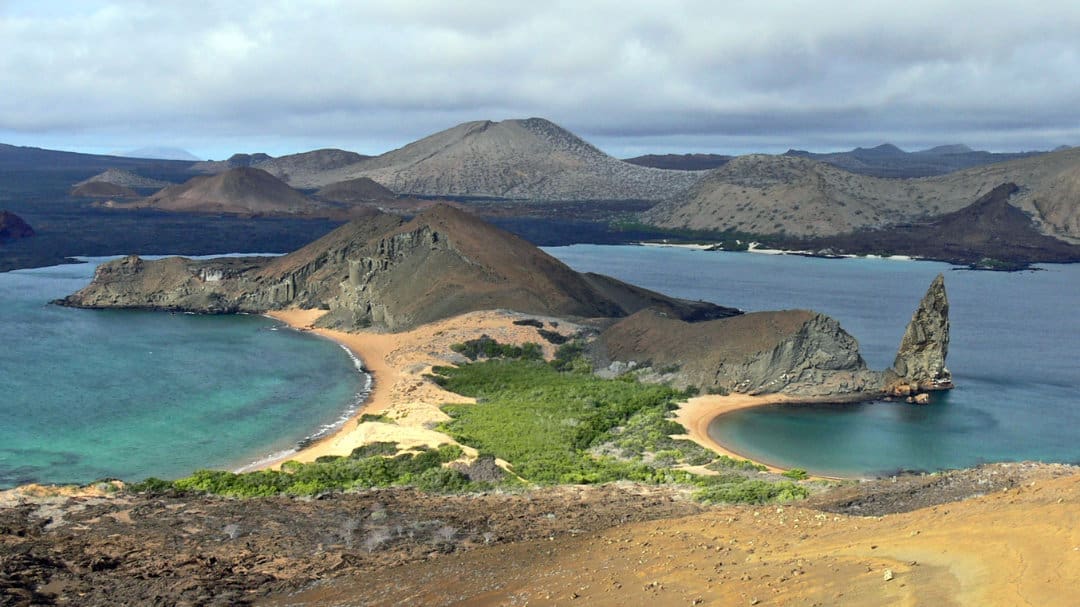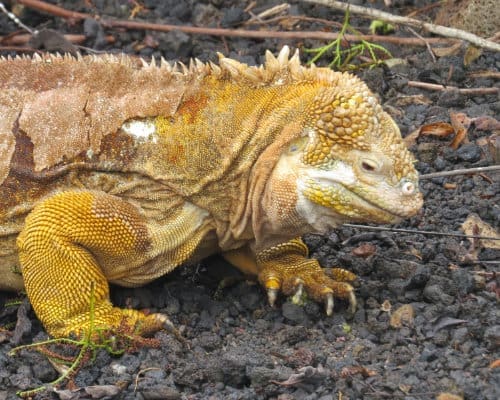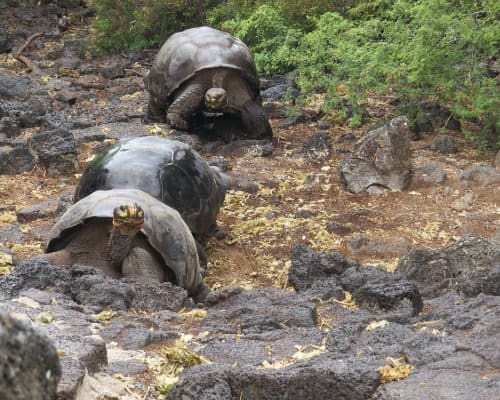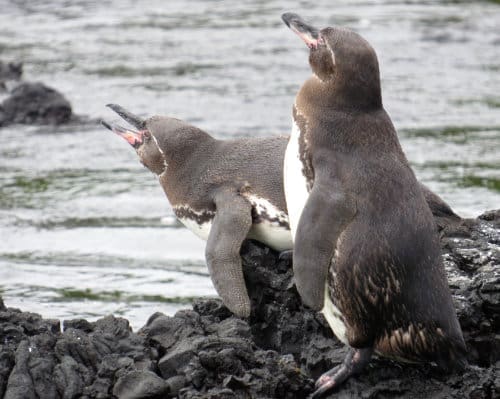Today, we embark on a virtual expedition to a realm of unparalleled wonder – the Galapagos Islands. Nestled in the heart of the Pacific Ocean, this Ecuadorian archipelago beckons with its unique blend of captivating wildlife, awe-inspiring landscapes, and a history that forever changed our understanding of life’s intricate tapestry.
An Evolutionary Haven Born of Fire and Time
Imagine a cluster of volcanic islands emerging from the depths of the ocean, their rugged contours painted by the hands of geologic time. The Galapagos Islands came into existence through volcanic upheavals over millions of years, laying the foundation for an ecosystem like no other on Earth.

Marvels of Adaptation: Galapagos Fauna
Creatures on the Galapagos islands challenge the conventional norms of existence. Among them, the Marine Iguanas stand out – a species that has embraced an aquatic lifestyle, braving ocean currents in search of sustenance. Their land-based cousins, the Land Iguanas, are equally entrancing – coming in a range of colors of deep gold to jet black, surviving in unbelievably arid conditions.

Add the Sally Lightfoot Crabs, with their vibrant orange carapaces, grace the shoreline like living gems. And there are many more like the fabled Galapagos Tortoise.
Giant Tortoises: Ancient Witnesses of Change
These gentle giants carry a remarkable history, having thrived on these isolated islands for eons. Their ponderous movements and wise expressions make them living testaments to the passage of time and the phenomenon of evolution. While males remain in the lush highlands year-round, females migrate to the the arid lowlands to nest. The Galapagos Tortoise is truly an amazing creature.

Finches: A Symphony of Adaptation
No discussion of the Galapagos is complete without the famous finches that captured Darwin’s imagination. These unassuming birds played a pivotal role in shaping Darwin’s thoughts on natural selection and adaptation, a cornerstone of modern evolutionary theory.
With over 17 species, Darwin’s finches are often difficult to tell apart. It takes a keen eye to notice a different shape of a beak or the feeding behavior of a bird. Location is key as many finches are limited by island or habitat.
Endemism: A Showcase of Island Isolation
Darwin’s Finches provide an excellent example of endemism – species found exclusively within a defined geographical area. But they aren’t the only species that are endemic to the archipelago. The Galapagos Islands are home to an array of unique and endemic species, each an embodiment of the intricate dance between organisms and their environment, including the Galapagos Tortoise, the Marine and Land Iguanas, and several species of birds, like the Galapagos Penguin.

A Reverence for Nature’s Masterpiece
Our short, virtual journey through the Galapagos serves as a reminder that the wonders of this extraordinary archipelago continue to inspire and inform our understanding of life’s diversity. The Galapagos are not only a testament to the past but also a beacon guiding us towards a future of conservation and appreciation.
So, fellow arm chair travelers, join me as we delve into the realm of the Galapagos on an all-inclusive tour of several islands. Experience a living laboratory of evolution, a sanctuary of unique life forms, with an enduring source of curiosity and discovery.

0 Comments